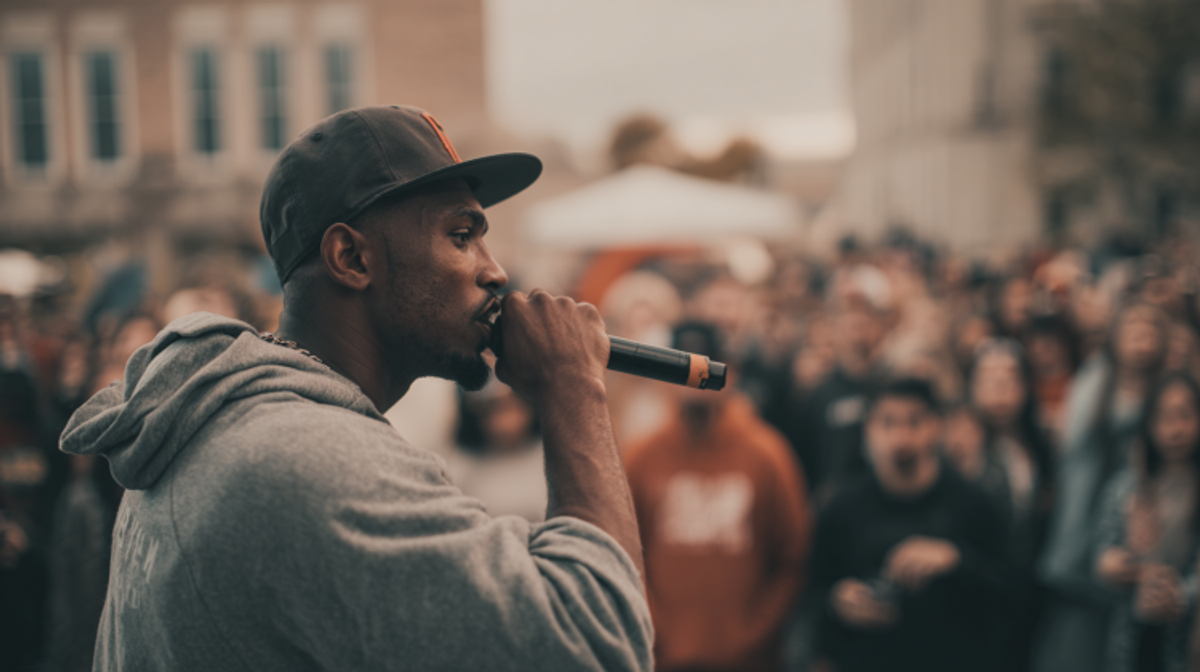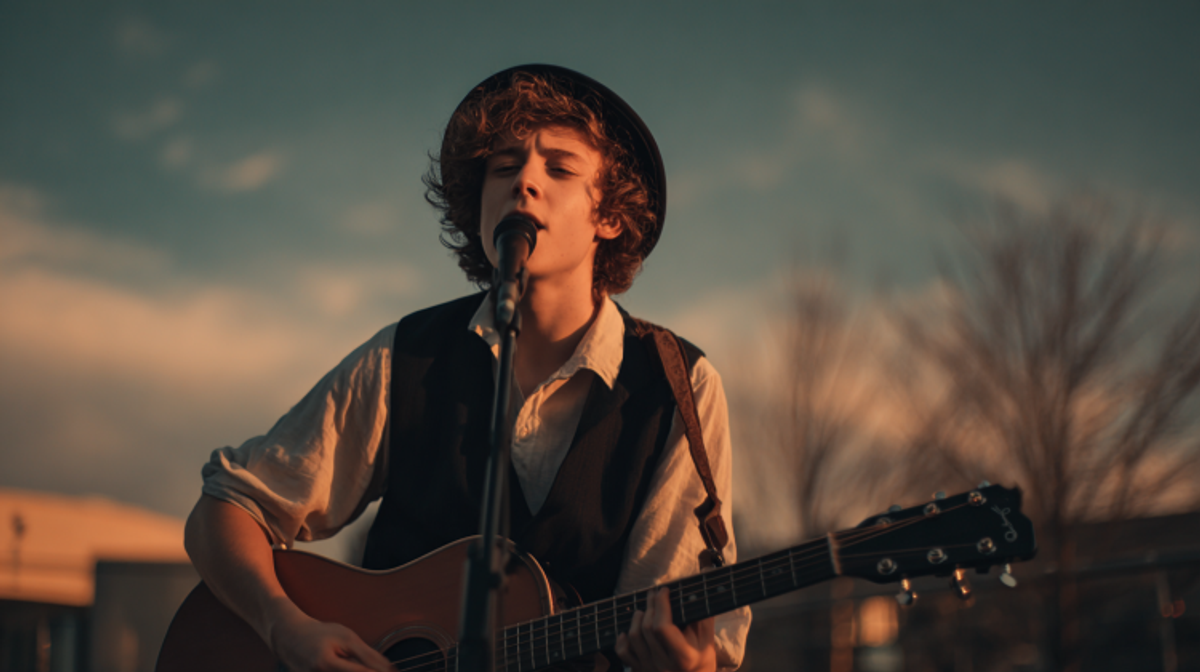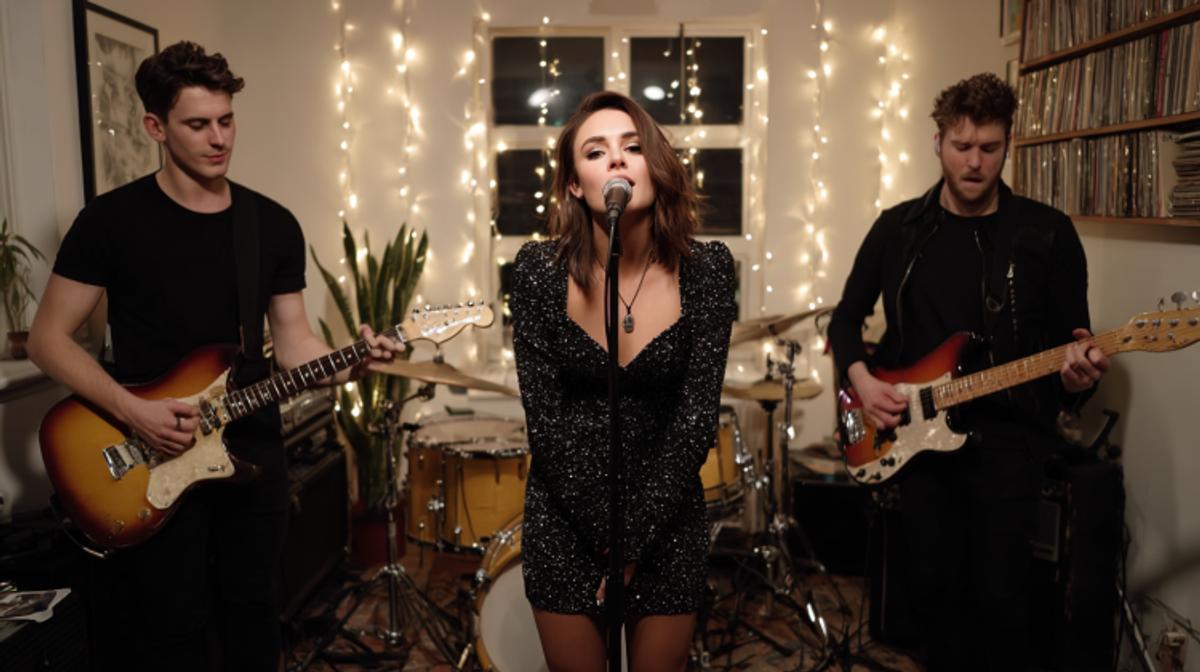How to Make Money from Music When Streams Don’t Pay the Bills

Music streaming has fundamentally altered how artists monetize their craft, but the numbers reveal a stark reality. With Spotify's 1000 stream threshold requirement and payments averaging just $0.003 per stream, musicians need approximately 333,333 streams monthly to earn minimum wage. This challenging landscape has forced independent artists to rethink their approach to generating sustainable income.
The recorded music industry generated $17.1 billion in 2024, with streaming accounting for 84% of total revenues. Yet most of this revenue flows to major label artists and established acts, leaving independent musicians scrambling for their share. The streaming revolt among artists has highlighted the need for diverse revenue strategies that extend far beyond digital platforms.
Modern musicians who achieve financial stability understand that streaming serves as just one component of a multifaceted income strategy. They've learned to leverage everything from sync licensing opportunities that can pay $50,000 per placement to direct-to-fan monetization models that generate predictable monthly income. The artists thriving now aren't necessarily those with millions of streams, but rather those who've mastered the art of income diversification across multiple channels.
Digital Revenue Streams

Digital platforms have revolutionized music monetization, creating opportunities that didn't exist a decade ago. Musicians can now reach global audiences without traditional gatekeepers, but understanding each platform's unique payment structure and audience behavior becomes crucial for maximizing earnings.
Streaming Platforms and Royalties
Spotify's pro rata payment model pools all subscription and advertising revenue, then distributes it based on each track's share of total platform streams. This system means that artists competing for the same revenue pool, with major label releases often dominating payouts. Independent artists face the challenge of the Spotify 1000 stream threshold, which requires tracks to reach this minimum before generating any royalty payments.
The streaming royalty landscape varies significantly across platforms. Apple Music typically pays $0.01 per stream, while Tidal offers some of the highest rates at $0.0125 per stream. YouTube Music pays considerably less, averaging $0.0008 per stream, but offers additional monetization through video content and advertising revenue sharing.
Artist royalties explained through the streaming model reveal that musicians receive only a fraction of the revenue generated by their music. After platform fees, distributor cuts, and potential label shares, independent artists might see 50-70% of the already small per-stream payouts. This reality has prompted many musicians to view streaming as a discovery and marketing tool rather than a primary revenue source.
Music streaming revenue continues growing globally, reaching $19.3 billion in 2024, but the distribution remains heavily skewed. The top 1% of artists receive approximately 90% of all streaming revenue, leaving the remaining 99% to share the remainder. This concentration has led to what many call the "streaming middle class problem," where artists with substantial followings still struggle to generate living wages from streaming alone.
Successful streaming strategies now focus on building consistent monthly listener bases rather than chasing viral hits. Artists who maintain 100,000 monthly listeners across multiple platforms can generate $1,500-$3,000 monthly from streaming royalties, particularly when they optimize their release schedules and maintain active playlist placements.
Digital Music Sales and Distribution
Direct digital sales offer higher profit margins than streaming, with platforms like Bandcamp allowing artists to keep 85-90% of sale prices. Many independent artists price their digital albums between $7-15, generating significantly more per sale than thousands of streams would produce. Limited edition digital releases, bonus content, and early access sales create additional value propositions for dedicated fans.
Distribution platforms have evolved beyond simple upload services to offer comprehensive revenue analytics and marketing tools. DistroKid, CD Baby, and TuneCore now provide detailed streaming analytics, playlist pitching services, and sync licensing opportunities. These platforms typically charge annual fees ranging from $20-50 but can increase an artist's digital presence across hundreds of platforms simultaneously.
Direct-to-fan sales through artist websites eliminate distributor fees entirely, allowing musicians to retain 95-97% of revenue after payment processing fees. WordPress plugins, Shopify integrations, and specialized music commerce platforms enable artists to sell digital downloads, exclusive content, and bundle packages directly to their audience.
The resurgence of vinyl and physical media has created hybrid opportunities where artists sell digital copies bundled with physical products. This strategy increases average transaction values while satisfying both digital convenience and collector preferences.
YouTube Monetization Strategies
YouTube's Partner Program allows musicians to monetize their content through advertising revenue, typically generating $1-5 per 1,000 views depending on audience demographics and engagement rates. Musicians with 100,000 monthly YouTube views can expect $100-500 in monthly ad revenue, but the platform's true value lies in its diverse monetization options.
Channel memberships enable artists to offer tiered subscription services directly through YouTube, with fans paying $4.99-24.99 monthly for exclusive content, early access to videos, and community features. Successful musicians often generate 20-40% of their YouTube income through memberships rather than advertising alone.
Super Chat and Super Thanks features allow fans to pay for highlighted messages during live streams and to tip creators on uploaded content. Musicians hosting regular live streaming sessions report earning $200-2,000 per stream through these direct fan contributions, particularly when they engage actively with supporters during broadcasts.
YouTube Shorts monetization has opened new revenue streams for musicians willing to create short-form content. The platform's $100 million creator fund and advertising revenue sharing for Shorts can generate additional income for artists who adapt their music content to the vertical video format.
Content ID systems on YouTube also generate revenue when other creators use copyrighted music in their videos. Musicians who register their catalogs can earn royalties from covers, remixes, and background music usage across the platform, creating passive income streams from their existing work.
Live Performance Income

Live performances remain one of the most reliable revenue streams for musicians, offering immediate payment and direct fan interaction. The live music industry generated $25.9 billion globally in 2024, with artists keeping significantly higher percentages of revenue compared to recorded music sales.
Touring and Concert Revenue
Ticket sales form the foundation of live performance income, but successful artists maximize earnings through strategic pricing and venue selection. Independent artists playing 200-500 capacity venues typically charge $15-35 per ticket, generating $3,000-17,500 per show before expenses. Regional touring circuits allow musicians to build sustainable income by playing the same venues multiple times annually.
Merchandise sales at live events generate 15-25% additional revenue beyond ticket sales. T-shirts, vinyl records, and exclusive tour merchandise create higher profit margins than digital sales, with successful artists earning $5-15 per attendee through merchandise. Limited edition tour-specific items often command premium prices and create urgency that drives sales.
VIP packages and meet-and-greet experiences allow artists to increase revenue per fan significantly. Premium tickets priced at $75-200 might include soundcheck access, signed merchandise, and photo opportunities. These experiences require minimal additional costs but can double or triple revenue per high-value fan.
Sponsorship opportunities arise when artists build consistent touring schedules and demonstrate reliable audience numbers. Local businesses, music equipment companies, and beverage brands often sponsor tours in exchange for promotional opportunities, providing additional revenue streams beyond ticket and merchandise sales.
Festival performances offer unique revenue opportunities with higher exposure potential. While festival pay rates vary widely, artists can leverage festival appearances to book additional regional shows, sell merchandise to larger audiences, and gain industry connections that lead to future opportunities.
Virtual Performances and Live Streaming
Virtual concerts experienced explosive growth during 2020-2021 and have evolved into a permanent revenue stream for many artists. Ticketed online performances through platforms like StageIt, Veeps, and Mandolin allow musicians to reach global audiences without travel expenses, keeping 70-85% of ticket revenue.
Live streaming monetization extends beyond ticketed events to include tip-based performances on platforms like Twitch, Instagram Live, and TikTok Live. Musicians hosting regular streaming sessions report earning $200-2,000 per month through viewer donations, subscription services, and virtual gift systems.
Hybrid events combining in-person and virtual attendance maximize revenue potential by expanding capacity beyond physical venue limitations. Artists can charge different price points for in-person and streaming access while creating exclusive content for each audience type.
Interactive streaming experiences using platforms like Concert Window or Sessions.live enable musicians to offer private concerts, music lessons, and fan meetups. These personalized experiences command premium pricing, often generating $100-500 per hour depending on the artist's following and the service provided.
Virtual reality concerts represent an emerging revenue stream, with platforms like Horizon Venues and VRChat hosting paid musical performances. Early adopters in VR music spaces report generating $500-5,000 per virtual concert, though audience sizes remain relatively small compared to traditional streaming platforms.
Music Publishing and Licensing

Music publishing and licensing represent some of the most lucrative long-term revenue streams for musicians, often generating income for decades after initial creation. The global music publishing market reached $6.9 billion in 2024, with sync licensing alone accounting for $1.2 billion of that total.
Sync Licensing for Film, TV, and Advertising
Synchronization licensing places music in visual media, creating substantial revenue opportunities for artists across all career levels. Independent artists can earn $1,000-50,000 per sync placement, depending on the media type, usage scope, and negotiating position. Television placements typically pay $1,500-15,000, while major advertising campaigns can generate $25,000-100,000 per licensed track.
Netflix, Amazon Prime, and other streaming platforms have dramatically increased sync licensing opportunities. These platforms produce hundreds of original series and films annually, each requiring extensive musical soundtracks. Independent artists who understand sync licensing requirements and maintain professionally produced catalogs position themselves for recurring revenue opportunities.
Video game licensing has emerged as a particularly lucrative sync category, with major titles paying $10,000-75,000 for original music. The gaming industry's $184 billion market creates constant demand for both atmospheric background music and featured tracks. Musicians who specialize in gaming music often develop ongoing relationships with developers, leading to multiple game soundtracks and steady income streams.
Advertising sync placements offer the highest immediate payouts but often require exclusive usage rights. National television commercials can pay $50,000-200,000 for well-known tracks, while regional campaigns typically offer $5,000-25,000. The key to advertising success lies in understanding brand messaging and creating music that enhances commercial narratives without overpowering them.
International sync licensing multiplies revenue potential as successful placements in one country often lead to usage in multiple territories. Artists who retain worldwide publishing rights can generate additional income when their music appears in foreign films, television shows, or advertising campaigns.
Music Libraries and Stock Music
Stock music libraries provide passive income opportunities for musicians willing to create instrumental tracks, background music, and genre-specific compositions. Exclusive libraries like AudioJungle, Pond5, and Premium Beat pay 35-70% royalties on each license, with popular tracks generating $100-2,000 monthly in passive income.
Non-exclusive libraries allow artists to distribute the same tracks across multiple platforms, maximizing exposure and revenue potential. Musicians who create consistent, high-quality library music often develop portfolios of 200-500 tracks that generate $1,000-5,000 monthly in combined royalties across platforms.
Corporate and educational markets represent underserved segments of the stock music industry. Musicians who create professional-quality corporate background music, educational content soundtracks, and presentation music often command higher licensing fees due to reduced competition and specific technical requirements.
Subscription-based music libraries like Artlist and Epidemic Sound offer artists upfront payments for exclusive catalog additions, typically ranging from $200-2,000 per track depending on quality and exclusivity terms. These platforms provide guaranteed income regardless of usage while handling all licensing and distribution logistics.
Specialty libraries focusing on specific genres, instruments, or cultural music create niche opportunities for artists with relevant expertise. World music, classical compositions, and experimental electronic music often command premium rates due to limited availability and specialized demand.
Publishing Royalties and Performance Rights
Performance rights organizations (PROs) like ASCAP, BMI, and SESAC collect royalties whenever music plays on radio, television, streaming services, and public venues. These organizations distribute over $3 billion annually to songwriters and publishers, making PRO registration essential for any musician releasing original compositions.
Mechanical royalties generate income whenever someone reproduces a songwriter's composition, including streaming plays, CD manufacturing, and digital downloads. The current mechanical royalty rate stands at $0.091 per song or $0.0175 per minute for longer compositions, providing predictable revenue based on distribution volume.
International royalty collection requires partnerships with foreign PROs or organizations like SOCAN (Canada), PRS (UK), and JASRAC (Japan). Musicians who tour internationally or achieve streaming success in multiple countries can significantly increase royalty income through proper international registration and collection systems.
Publishing administration services help independent artists maximize royalty collection while maintaining ownership of their compositions. Companies like Songtrust, TuneCore Publishing, and CD Baby Pro charge 10-15% commissions but often increase total royalty collection by 200-400% through comprehensive registration and active collection efforts.
Co-writing opportunities with established songwriters provide access to higher-profile projects while splitting publishing income. Many independent artists supplement their solo careers by writing with artists who have major label connections, streaming success, or sync licensing relationships.
Music Production Services

The democratization of music production technology has created numerous opportunities for musicians to monetize their technical skills and creative abilities. The global music production software market reached $11.2 billion in 2024, indicating strong demand for production-related services across all skill levels.
Selling Beats and Instrumental Tracks
Beat selling has evolved into a substantial industry, with successful producers earning $50,000-500,000 annually through beat marketplace platforms. BeatStars, Airbit, and Traktrain help beat sales with pricing typically ranging from $25-200 for exclusive rights and $5-50 for non-exclusive licenses. Top producers on these platforms report selling 100-500 beats monthly.
Genre specialization significantly impacts beat sales success, with trap, hip-hop, and R&B instrumentals commanding the highest prices and volume. But, emerging genres like Afrobeat, UK drill, and Latin trap create opportunities for producers willing to develop expertise in underserved markets. Specialized producers often charge premium rates due to reduced competition.
Custom beat production for specific artists generates higher revenue per project, typically ranging from $200-2,000 depending on the client's budget and the producer's reputation. Many beat makers develop ongoing relationships with recording artists, providing multiple beats monthly and earning steady income through exclusive production partnerships.
Royalty sharing agreements allow beat producers to participate in the long-term success of songs built on their instrumentals. Rather than selling beats outright, producers can negotiate 10-50% publishing splits, generating ongoing royalty income when artists achieve commercial success with their productions.
Sample pack creation offers passive income opportunities for producers willing to create high-quality drum samples, melody loops, and sound effects. Splice, Loopmasters, and other sample platforms pay producers $200-2,000 upfront for exclusive sample packs, plus ongoing royalties when individual samples are downloaded by subscribers.
Session Work and Remote Recording
Remote session work has exploded since 2020, with platforms like SoundBetter, Fiverr, and AirGigs connecting musicians with artists worldwide. Experienced session players charge $100-1,000 per track depending on instrument, complexity, and turnaround time. Guitar, bass, drums, and vocal sessions represent the highest demand categories.
Home studio capabilities have democratized session work, allowing musicians to provide professional-quality recordings without expensive studio rental fees. A basic home recording setup costing $2,000-5,000 can generate $1,000-10,000 monthly in session work revenue for skilled musicians willing to market their services actively.
Specialty instruments and unique skills command premium rates in the session market. Musicians who play unusual instruments like sitar, didgeridoo, or vintage synthesizers often charge 2-3 times standard session rates due to limited availability and specialized knowledge requirements.
Ongoing artist relationships provide the most stable session work income, with many remote musicians developing partnerships with 5-10 regular clients who require monthly recording services. These relationships often evolve into profit-sharing arrangements or exclusive production partnerships that provide predictable monthly income.
Live session streaming services enable real-time collaboration between artists in different locations, commanding hourly rates of $50-200 for experienced musicians. Platforms like SessionWire and Source-Connect help these collaborations while handling payment processing and scheduling logistics.
Music Production and Mixing Services
Mixing services represent one of the most scalable music production revenue streams, with experienced engineers charging $200-2,000 per song depending on complexity and client expectations. Many mixing engineers handle 20-50 projects monthly, generating $4,000-40,000 in monthly revenue through efficient workflow systems and competitive pricing.
Mastering services command higher per-project fees, typically ranging from $50-500 per song depending on the engineer's reputation and the required delivery timeline. Album mastering projects often include discounted per-song rates while generating $500-5,000 in revenue per completed project.
Specialization in specific genres or technical approaches allows production professionals to command premium rates while reducing competition. Engineers who focus exclusively on metal, electronic, or classical music often develop reputations that enable them to charge 50-100% above generalist competitors.
Online production courses and educational content create passive income streams for experienced producers willing to share their knowledge. Udemy, Skillshare, and independent course platforms enable producers to earn $500-5,000 monthly through comprehensive production education programs.
Production partnerships with record labels and management companies provide ongoing revenue opportunities beyond individual project work. Many independent producers develop relationships with indie labels that require 10-20 productions monthly, creating predictable income streams and career advancement opportunities.
Teaching and Educational Revenue

Music education represents a stable, recession-resistant revenue stream that leverages musicians' expertise while providing flexible scheduling options. The global music education market reached $5.8 billion in 2024, with online instruction accounting for an increasingly large portion of total revenue.
Online Music Lessons
Platform-based lesson services like TakeLessons, Lessonface, and Wyzant connect music instructors with students worldwide, typically charging $30-100 per hour depending on instrument, experience level, and lesson complexity. Experienced instructors teaching specialized techniques or advanced theory often command $75-150 per hour for one-on-one instruction.
Independent lesson pricing allows musicians to maximize earnings while building direct relationships with students. Private instructors charging $40-80 per hour and teaching 15-25 hours weekly can generate $2,400-8,000 monthly while maintaining flexible schedules that accommodate performance and recording commitments.
Group lesson formats increase revenue per hour by serving multiple students simultaneously. Online group guitar, piano, or voice lessons priced at $20-40 per student can generate $100-200 per hour when serving 5-8 students per session. Many instructors offer both individual and group options to maximize scheduling efficiency.
Specialty instruction in areas like music production, songwriting, and music business commands premium rates due to specialized knowledge requirements. Instructors teaching Logic Pro, Ableton Live, or industry-specific skills often charge $60-120 per hour while maintaining waiting lists of interested students.
Subscription-based lesson programs create predictable monthly revenue through recurring student payments. Many instructors offer monthly packages at $120-400 per student, providing multiple lessons plus practice materials, feedback, and progress tracking services.
Course Creation and Educational Content
Comprehensive online courses generate substantial passive income once created, with successful music education courses earning $1,000-20,000 monthly through platforms like Teachable, Thinkific, and Kajabi. Course prices typically range from $97-497, with advanced programs commanding $997-2,497 for extensive instruction and support.
YouTube educational channels monetize through advertising revenue, channel memberships, and affiliate marketing while building audiences that support other revenue streams. Music education channels with 50,000+ subscribers often generate $500-5,000 monthly through diverse monetization strategies beyond advertising alone.
Workshop and masterclass events provide high-value educational experiences that command premium pricing. Virtual workshops priced at $47-197 per participant can generate $2,000-15,000 per event depending on topic relevance and instructor reputation. Many educators host monthly workshops to create recurring revenue streams.
Educational content partnerships with music companies, software developers, and equipment manufacturers create sponsored content opportunities that pay $500-5,000 per project. These partnerships often include ongoing relationships that provide consistent monthly revenue through product demonstrations and educational collaborations.
Book publishing and digital resource creation offer additional passive income streams for educators willing to document their teaching methods and musical knowledge. E-books priced at $19-97 can generate ongoing royalties while establishing expertise and credibility that supports other educational revenue streams.
Brand Partnerships and Alternative Income
Alternative revenue streams have become essential for musicians seeking financial stability, with many artists generating 40-60% of their income through non-traditional sources. The creator economy reached $104 billion in 2024, providing numerous opportunities for musicians to monetize their personal brands and audience relationships.
Merchandise Sales
Direct-to-consumer merchandise sales offer some of the highest profit margins in the music industry, with successful artists keeping 60-80% of retail prices after production and fulfillment costs. T-shirts, hoodies, and accessories priced at $25-75 generate $15-50 profit per item when produced efficiently through print-on-demand or bulk manufacturing.
Limited edition and exclusive merchandise creates urgency that drives higher sales volumes and premium pricing. Artist-designed items, tour-specific products, and collaborative merchandise often sell for 50-100% above standard pricing while generating similar production costs. Many artists report selling 200-500 exclusive items within hours of release announcements.
Merchandise bundling with music releases increases average transaction values while providing fans with comprehensive packages. Album bundles including vinyl, digital downloads, and exclusive merchandise typically sell for $40-80, generating significantly more revenue per fan than individual item purchases.
Print-on-demand services like Printful, Gooten, and Printify eliminate inventory risks while enabling global merchandise sales. These platforms handle production and shipping logistics, allowing artists to focus on design and marketing while maintaining 20-40% profit margins on each sale.
Fan-designed merchandise contests create community engagement while reducing design costs. Many artists host design competitions where fans create artwork in exchange for revenue sharing or cash prizes, generating unique merchandise concepts while strengthening fan relationships.
Sponsorships and Brand Collaborations
Music equipment sponsorships provide free or discounted gear in exchange for promotional activities, reducing operational costs while creating content opportunities. Instrument manufacturers, audio equipment companies, and software developers often provide $1,000-10,000 worth of equipment annually to artists with strong social media presence and performance schedules.
Brand ambassador programs create ongoing revenue streams through monthly payments, performance bonuses, and exclusive opportunities. Musicians with 10,000+ engaged social media followers can secure ambassador deals paying $200-2,000 monthly plus performance incentives based on engagement and conversion metrics.
Sponsored content creation allows artists to monetize their social media presence through branded posts, product reviews, and creative collaborations. Instagram posts featuring music-related products typically command $100-1,000 per post depending on follower count and engagement rates, while YouTube sponsorships often pay $1,000-10,000 per video.
Festival and venue partnerships create opportunities for artists to secure guaranteed performance slots, promotional support, and revenue sharing arrangements. Many regional venues offer house band positions or regular booking agreements that provide consistent monthly income while building local audience bases.
Cross-industry collaborations with fashion brands, lifestyle companies, and technology firms expand revenue opportunities beyond traditional music partnerships. Artists who develop personal brands extending beyond music often secure partnerships paying $5,000-50,000 for creative collaborations and product development projects.
Crowdfunding and Fan Subscriptions
Patreon and subscription platforms enable artists to generate predictable monthly revenue through tiered fan support, with successful musicians earning $500-15,000 monthly through dedicated subscriber bases. Effective subscription programs offer exclusive content, early access, behind-the-scenes materials, and direct interaction opportunities that justify recurring payments.
Project-based crowdfunding through Kickstarter, Indiegogo, and GoFundMe provides capital for album production, tour funding, and equipment purchases while pre-selling products to existing fans. Successful music campaigns often raise 150-300% of their stated goals when artists maintain engaged communities and offer compelling rewards.
Fan club memberships create exclusive communities while generating recurring revenue through annual or monthly fees. Premium fan clubs priced at $5-25 monthly provide access to private content, live streams, merchandise discounts, and priority ticket access. Many artists maintain 200-2,000 active fan club members generating $1,000-25,000 monthly in subscription revenue.
Direct fan tipping through platforms like Ko-fi, Buy Me a Coffee, and PayPal creates opportunities for audience members to support artists voluntarily. Musicians who regularly engage with fans through social media and live streaming often receive $100-2,000 monthly through voluntary fan contributions.
Exclusive content platforms like OnlyFans and Fanvue, while primarily associated with adult content, also serve musicians offering behind-the-scenes access, acoustic performances, and personal interaction. Musicians using these platforms for music content report earning $200-5,000 monthly through subscription fees and tips from dedicated supporters.
Building Multiple Revenue Streams
Financial sustainability in music requires strategic diversification across multiple income sources, with successful artists typically maintaining 6-12 active revenue streams simultaneously. The most financially stable musicians generate income through complementary channels that reinforce each other while providing stability during market fluctuations.
Diversifying Your Music Income
Revenue stream analysis reveals that artists earning living wages from music typically generate 15-25% of income from streaming, 25-35% from live performances, 20-30% from services (production, teaching, session work), and 20-30% from alternative sources (merchandise, sponsorships, licensing). This distribution provides stability when individual streams fluctuate due to market conditions or seasonal factors.
Geographic diversification protects against regional economic downturns while expanding market opportunities. Artists who build audiences across multiple countries often maintain more stable income streams, as economic challenges in one region rarely affect all markets simultaneously. Digital platforms enable global audience development without significant additional investment.
Skill-based diversification leverages existing musical abilities across multiple application areas. Musicians who perform, produce, teach, and write often find these activities support each other, with teaching improving performance skills, production knowledge enhancing songwriting abilities, and performance experience informing instruction methods.
Passive versus active income balance ensures long-term financial stability while maintaining current earning capacity. Successful artists typically aim for 40-60% active income (performances, lessons, session work) and 40-60% passive income (royalties, licensing, course sales, merchandise) to provide security during periods when active work becomes limited.
Seasonal income planning addresses the cyclical nature of many music revenue streams. Live performance income often peaks during summer months and holidays, while educational services may increase during school years. Artists who understand these patterns can plan complementary activities that maintain consistent monthly income throughout the year.
Long-Term Financial Planning for Musicians
Royalty portfolio development creates lasting wealth through intellectual property ownership and strategic catalog building. Musicians who consistently release high-quality original material while retaining publishing rights often see royalty income increase substantially over 5-10 year periods, particularly when they achieve sync placements or streaming success.
Business entity formation provides tax advantages, liability protection, and professional credibility while enabling more sophisticated financial planning. Many successful musicians operate as LLCs or corporations, allowing them to deduct business expenses, invest pre-tax income, and separate personal and professional finances.
Retirement planning for musicians requires understanding that traditional employer-sponsored retirement plans rarely exist in the music industry. Independent artists must create their own retirement savings through IRAs, solo 401(k) plans, and diversified investment portfolios that account for irregular income patterns and extended earning timelines.
Healthcare and insurance considerations become crucial for independent musicians who lack employer-provided benefits. Many artists purchase health insurance through marketplace plans, maintain separate policies for equipment and liability coverage, and consider disability insurance that protects against injury-related income loss.
Tax optimization strategies help musicians retain more of their earnings while remaining compliant with complex tax regulations affecting multiple revenue streams. Working with accountants familiar with entertainment industry taxation often identifies deductions and strategies that significantly reduce tax burdens while enabling better financial planning.
Estate planning ensures that musical assets, including copyrights, recordings, and business relationships, transfer appropriately to heirs or designated beneficiaries. Musicians with substantial catalogs or ongoing revenue streams often establish trusts or other estate planning structures that protect assets while minimizing tax implications for beneficiaries.
Investment diversification beyond music-related assets provides financial security during career transitions or industry changes. Many successful musicians invest in real estate, index funds, and other assets that generate income independent of their musical careers while building long-term wealth that supports eventual retirement or reduced touring schedules.

Final Thoughts
The music industry's economic reality demands that artists think beyond traditional revenue models to build sustainable careers. While streaming platforms continue dominating music consumption, the Spotify 1000 stream threshold and minimal per-stream payouts have made diversification essential rather than optional for independent musicians seeking financial stability.
Successful artists now operate as multimedia entrepreneurs, leveraging their musical skills across teaching, production, licensing, and direct fan monetization. The most financially stable musicians maintain 6-12 active revenue streams, ensuring that downturns in any single area don't threaten their overall income stability.
The streaming revolt has accelerated innovation in direct-to-fan monetization, with platforms like Bandcamp, Patreon, and various subscription services enabling artists to capture more value from their most dedicated supporters. These platforms often generate higher per-fan revenue than streaming while building stronger community connections that support long-term career sustainability.
Education and skill development emerge as crucial investments for modern musicians. Those who master production techniques, business fundamentals, and digital marketing often outperform technically superior musicians who lack entrepreneurial skills. The intersection of artistic talent and business acumen increasingly determines career outcomes.
Technology continues creating new opportunities, from virtual reality concerts to AI-assisted production tools that enable solo artists to create full productions. Musicians who embrace technological change while maintaining authentic artistic expression position themselves for emerging revenue opportunities that may not exist today.
The path to sustainable music income requires patience, experimentation, and willingness to treat music as both art and business. Artists who diversify strategically, build direct fan relationships, and continuously adapt to industry changes create careers that survive market fluctuations while providing creative fulfillment.
Whether pursuing music full-time or supplementing other income sources, understanding these diverse revenue streams empowers musicians to make informed decisions about their careers. The artists thriving now aren't necessarily the most talented, but rather those who best understand how to monetize their talents across multiple channels while building lasting connections with their audiences.
References
Music Industry Research Association. "Global Music Revenue Report 2024." Music Business Worldwide, 2024.
Streaming Economics Institute. "Artist Royalty Distribution Analysis." Billboard Pro, 2024.
Independent Artist Revenue Study. "Diversification Strategies for Musicians." Music Industry Blog, 2025.
Live Performance Revenue Analysis. "Concert Industry Financial Report." Pollstar, 2024.
Sync Licensing Market Research. "Film and TV Music Placement Trends." Variety Intelligence Platform, 2024.
Creator Economy Report. "Influencer and Content Creator Earnings." Creator Economy Research, 2024.
Music Education Market Analysis. "Online Learning Trends in Music." EdTech Analytics, 2025.
MusicTech Industry Survey. "Producer and Engineer Earning Patterns." Sound on Sound, 2024.
Cristina Arcega-Punzalan is a content writer at AMW.
